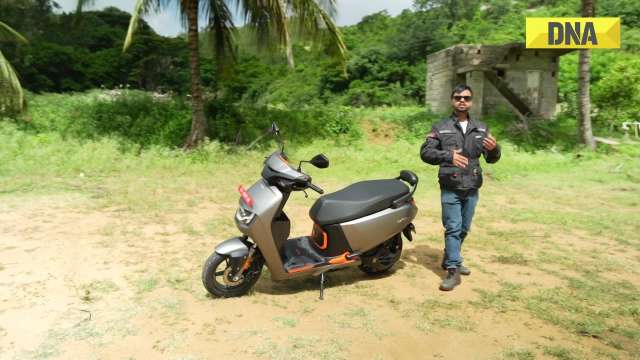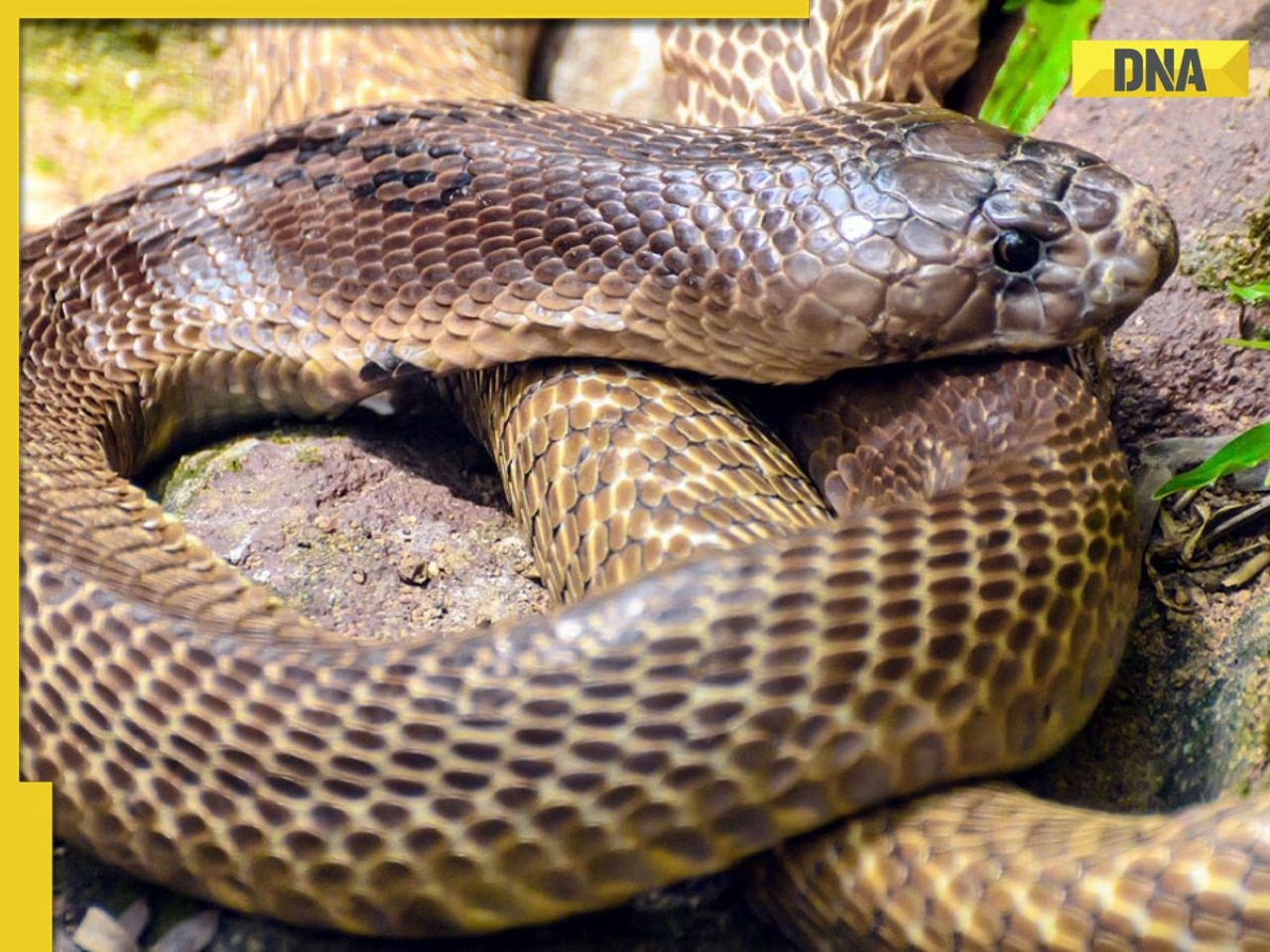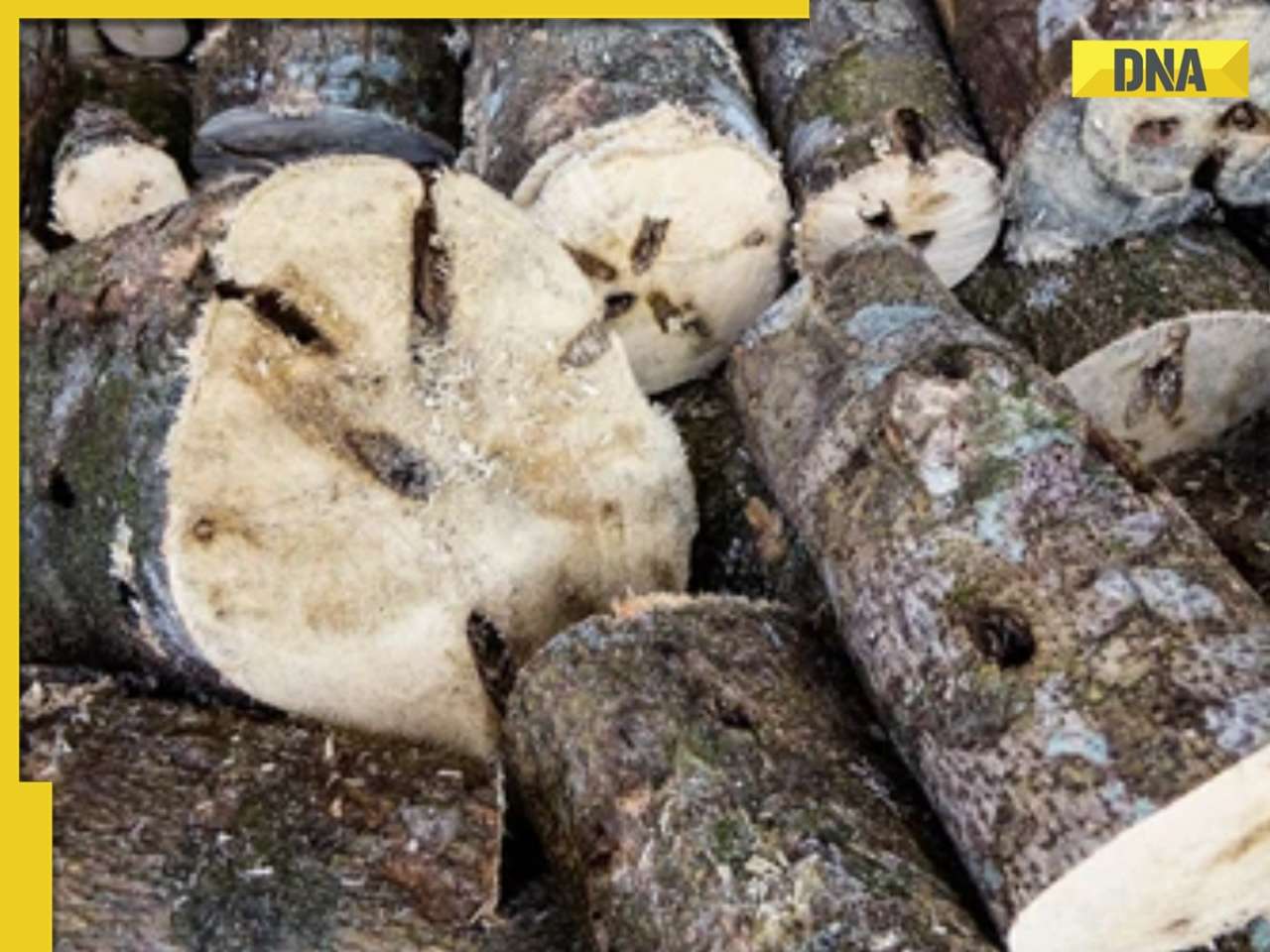India's "Brown Revolution 2.0" aims to leverage cow dung as an economic and environmental asset, potentially boosting rural income, energy security, and organic farming.
Historically, the term 'brown revolution' has been linked to improved soil health and fertilizer levels, but it has taken on a new meaning. The term 'brown revolution 2.0' describes the potential of cow excrement, or 'gobar,' as an economic and environmental resource within the context of India's rural economy.
The new Brown Revolution 2.0 Cow dung as a rural asset
According to the 20th Livestock Census, which was carried out by the Ministry of Fisheries, Animal Husbandry, and Dairy, there are more than 303 million cows in India. Three million tonnes of cow dung are produced every day in this country, according to estimates, but most of it is never processed and is therefore discarded or misused halfway through.
In recent years, cow dung has also gained popularity as a raw material for energy, organic fertilizer, and environmentally friendly consumer goods. It represents a new turning point in the course of what is now known as the Brown Revolution 2.0.
The Emergence of Biogas and Compressed Bio gas (CBG)
In 2018, the Union Ministry of Petroleum and Natural Gas created the Sustainable Alternative Towards Affordable Transportation (SATAT) program to promote Compressed Biogas (CBG). The current CBG Production of India is 480 tonnes a day by the Petroleum Planning and Analysis Cell (PPAC) estimations of 2024. There is also this information in this report that reads that 50 percent of the feedstock comes in the form of agricultural waste and cattle dung.
According to the report issued by PPAC, it has been noted that the possible CBG capacity of India is approximately 62 million tonnes per annum which will be able to reduce imports of fossil fuel by up to a sum of 10 billion dollars per year on full exploitation of its capacity.
Organic Farming and Cow Dung based Fertilizers
One of the most important organic farming component is cow dung. It is used in formulation of Panchgavya, Jeevamrit, Vermicompost. The Ministry of Agriculture promotes organic farming on more than 23 lakh hectare of farm-land with the aid of Paramparagat Krishi Vikas Yojana (PKVY).
In its 2025 assessment, NITI Aayog indicated that the implementation of gobar-based bio-inputs caused soil fertility rates to go up by 17% to 20% and reduced crop manufacturing expenditure by 15 percent among pilot areas in Madhya Pradesh and Maharashtra.
Village Economy and Deconcentrate Economy
Cow dung has developed to be a source of decentralized job. Governmental and non-governmental efforts have established gobar-industries in states including Chhattisgarh, Madhya Pradesh, and Uttar Pradesh, which manufacture cow dung diyas, incense sticks, and seed balls as well as biodegradable population.
To give an example, a report published by the State Department of Agriculture revealed that Chhattisgarh Godhan Nyay Yojana, a scheme in which cow dung was purchased at the rate of 2 rupees per kg, had purchased more than 1 crore quintals of cow dung and generated more than 13, 000 direct jobs until March 2024.
Environmental Benefits- At A Glance
Bio fertilizer produced using cow-dung helps in cutting down the emissions of the greenhouse gases up to 28 percent when compared to the synthetic ones as revealed in a 2024 study conducted by the Centre for Science and Environment (CSE).
Besides this, in the case of biogas plants, cow-dung will serve to avoid emissions in the form of methane which would have otherwise been formed due to the process of open-air decomposition. An Indian fact sheet of UNEP (United Nations Environment Programme) released in late 2024 estimated that methane emissions due to unregulated cow dung should be nearly 15 percent of all agricultural GHG emissions in India.
Obstacles on the Way of Brown Revolution 2.0
In spite of such promises, the challenges ahead of Brown Revolution 2.0 are the inadequate cold storage, logistics, the absence of an organized system of cow dung collection, Regulatory Bottlenecks in permitting Organic Fertilizers and licenses in the use of Energy, and ignorance of farmers about the economic viability of gobar-based products as commodities.
Recently, the release of Draft National Bio-Energy Policy 2025 (released by the Ministry of New and Renewable Energy) also seeks to deal with some of these problems by proposing incentives to community-based gobar processing units and a liberal regulation space to rural entrepreneurs.
Venugopal Naidu Puvvada, Trustee and National Coordinator- Tech and Innovation, Rashtriya Gau Sevak Sangh (RGSS) opined, the Brown Revolution 2.0 can form a significant contribution to the economic development of India. We need to have the right vision about our soil and cow dung. The bovine faeces will be able to form a support pillar of the Atmanirbhar Bharat Initiative of India. When we will come to know the real potential of cow dung, only then we can stand up, as a nation in our real potential.”
Considering the trend and demand of cow dung, we can also say that brown revolution 2.0 can lead India with its next big economic jump in the years to come.
 Taylor Swift gives sassy reply to ex-boyfriend Matty Healy's mom's jibe: 'She has to take...'
Taylor Swift gives sassy reply to ex-boyfriend Matty Healy's mom's jibe: 'She has to take...' IND vs ENG: Shubman Gill breaks Virat Kohli's 9-year-old record of..., now eyes Sunil Gavaskar's legendary Test feat
IND vs ENG: Shubman Gill breaks Virat Kohli's 9-year-old record of..., now eyes Sunil Gavaskar's legendary Test feat Hariyali Teej 2025: Top wishes, greetings, quotes, messages and WhatsApp status
Hariyali Teej 2025: Top wishes, greetings, quotes, messages and WhatsApp status Amid US President Donald Trump 'golf-heavy' visit to Scotland, protests erupts in major cities with anti-Trump slogans, 'FELON 47 NOT...'
Amid US President Donald Trump 'golf-heavy' visit to Scotland, protests erupts in major cities with anti-Trump slogans, 'FELON 47 NOT...' Meet man, son of tea seller, who cracked UPSC exam thrice without any coaching to become IAS officer, his AIR was..., he is currently posted in...
Meet man, son of tea seller, who cracked UPSC exam thrice without any coaching to become IAS officer, his AIR was..., he is currently posted in... 7 stunning images of Galactic 'Fossil' captured by NASA
7 stunning images of Galactic 'Fossil' captured by NASA Other than heart attacks or BP : 7 hidden heart conditions triggered by oily foods
Other than heart attacks or BP : 7 hidden heart conditions triggered by oily foods 7 most captivating space images captured by NASA you need to see
7 most captivating space images captured by NASA you need to see AI-remagined famous Bollywood father-son duos will leave you in splits
AI-remagined famous Bollywood father-son duos will leave you in splits 7 superfoods that boost hair growth naturally
7 superfoods that boost hair growth naturally Tata Harrier EV Review | Most Advanced Electric SUV from Tata?
Tata Harrier EV Review | Most Advanced Electric SUV from Tata? Vida VX2 Plus Electric Scooter Review: Range, Power & Real-World Ride Tested!
Vida VX2 Plus Electric Scooter Review: Range, Power & Real-World Ride Tested! MG M9 Electric Review | Luxury EV with Jet-Style Rear Seats! Pros & Cons
MG M9 Electric Review | Luxury EV with Jet-Style Rear Seats! Pros & Cons Iphone Fold: Apple’s iPhone Fold Could Solve Samsung’s Biggest Foldable Problem | Samsung Z Fold 7
Iphone Fold: Apple’s iPhone Fold Could Solve Samsung’s Biggest Foldable Problem | Samsung Z Fold 7 Trump News: Congress Seeks Answers On Trump's Alleged Mediation In Operation Sindoor
Trump News: Congress Seeks Answers On Trump's Alleged Mediation In Operation Sindoor OpenAI CEO Sam Altman issues CHILLING warning, says conversations with ChatGPT are...
OpenAI CEO Sam Altman issues CHILLING warning, says conversations with ChatGPT are... This man becomes world's highest-earning billionaire in 2025, beats Elon Musk and Jeff Bezos, Mukesh Ambani is at...
This man becomes world's highest-earning billionaire in 2025, beats Elon Musk and Jeff Bezos, Mukesh Ambani is at... Meet man who built Rs 200,000,000 empire after two failed ventures, his business is..., net worth is Rs...
Meet man who built Rs 200,000,000 empire after two failed ventures, his business is..., net worth is Rs... Meet man, founder of app under govt lens, also owns Rs 1000000000 business, he is..., his educational qualification is...
Meet man, founder of app under govt lens, also owns Rs 1000000000 business, he is..., his educational qualification is... Jinnah wanted THIS Muslim man to be first Finance Minister of Pakistan, he refused, his son is on Forbes list of billionaires
Jinnah wanted THIS Muslim man to be first Finance Minister of Pakistan, he refused, his son is on Forbes list of billionaires Inside Ahaan Panday’s academic journey before his Bollywood debut in Saiyaara
Inside Ahaan Panday’s academic journey before his Bollywood debut in Saiyaara From Alia Bhatt to Anushka Sharma: 5 Bollywood moms who are redefining style
From Alia Bhatt to Anushka Sharma: 5 Bollywood moms who are redefining style Want to think like a billionaire? Try these 5 habits followed by Bill Gates, Narayana Murthy and others
Want to think like a billionaire? Try these 5 habits followed by Bill Gates, Narayana Murthy and others In Pics: Tara Sutaria brings fairytale magic to ramp in a shimmering golden gown at ICW 2025
In Pics: Tara Sutaria brings fairytale magic to ramp in a shimmering golden gown at ICW 2025 From Love in the Moonlight to Moon Embracing the Sun: 7 must-watch K-dramas
From Love in the Moonlight to Moon Embracing the Sun: 7 must-watch K-dramas PM Modi issues BIG statement on India-UK trade deal, says, 'It shows growing trust of...'
PM Modi issues BIG statement on India-UK trade deal, says, 'It shows growing trust of...' SHOCKING! 1-year-old child bites cobra to death in THIS state: 'He was spotted with...'
SHOCKING! 1-year-old child bites cobra to death in THIS state: 'He was spotted with...' India appeals to Thailand, Cambodia to prevent escalation of hostilities: 'Closely monitoring...'
India appeals to Thailand, Cambodia to prevent escalation of hostilities: 'Closely monitoring...' NCERT to introduce dedicated module on 'Operation Sindoor' for students of Class...
NCERT to introduce dedicated module on 'Operation Sindoor' for students of Class... Mumbai Pune Expressway: 1 killed, many injured after nearly 20 vehicles crash in major accident
Mumbai Pune Expressway: 1 killed, many injured after nearly 20 vehicles crash in major accident Meet man, son of tea seller, who cracked UPSC exam thrice without any coaching to become IAS officer, his AIR was..., he is currently posted in...
Meet man, son of tea seller, who cracked UPSC exam thrice without any coaching to become IAS officer, his AIR was..., he is currently posted in... Indian Army Agniveer CEE 2025 result declared, here's how you can download it
Indian Army Agniveer CEE 2025 result declared, here's how you can download it Meet IPS officer, DU grad, who cracked UPSC exam in her third attempt, secured 992 out of 2025 marks with AIR..., now married to IAS...
Meet IPS officer, DU grad, who cracked UPSC exam in her third attempt, secured 992 out of 2025 marks with AIR..., now married to IAS... Meet woman, who studied MBBS, later cracked UPSC with AIR..., became popular IAS officer for these reasons, shares similarities with IAS Tina Dabi, she is from...
Meet woman, who studied MBBS, later cracked UPSC with AIR..., became popular IAS officer for these reasons, shares similarities with IAS Tina Dabi, she is from... Meet Nilufa Yasmine, who topped UGC NET June exam, failed twice before scoring a perfect 100, she is from...
Meet Nilufa Yasmine, who topped UGC NET June exam, failed twice before scoring a perfect 100, she is from... Maruti Suzuki's e Vitara set to debut electric market at Rs..., with range of over 500 km, to launch on...
Maruti Suzuki's e Vitara set to debut electric market at Rs..., with range of over 500 km, to launch on... This is world’s most expensive wood, cost of 1kg wood is more than gold, its name is..., is found in...
This is world’s most expensive wood, cost of 1kg wood is more than gold, its name is..., is found in... This luxury car is first choice of Indians, even left BMW, Jaguar, Audi behind in sales, it is...
This luxury car is first choice of Indians, even left BMW, Jaguar, Audi behind in sales, it is... Kia India unveils Carens Clavis: Check features, design changes, price and more; bookings open on...
Kia India unveils Carens Clavis: Check features, design changes, price and more; bookings open on... Tesla CEO Elon Musk launches most affordable Cybertruck, but it costs Rs 830000 more than older version, it is worth Rs...
Tesla CEO Elon Musk launches most affordable Cybertruck, but it costs Rs 830000 more than older version, it is worth Rs...




)











